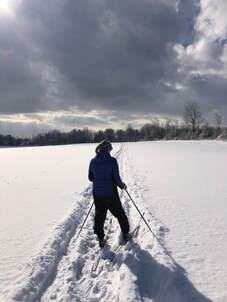|
11/21/2022 0 Comments Accept Failure and Move One Rachel's first book, Under the Sea Wind (1941), was a flop, selling less than 2k copies. Carson chalked it up to timing - it came out on the eve of World War II - but also blamed her publisher for lack of marketing. Specifically, she was miffed that they hadn't taken her guidance on the target market - naturalists, nature lovers, sportsmen and women. Her only consolation was the rave reviews the book received from places like the New York Times, colleagues, and critics. Even so, she only netted 1k for her efforts. Rachel's need for income beyond her government salary caused her to hesitate to pay $150.00 for the rights back from Simon and Schuster for Under the Sea Wind. But when they refused to issue a reprint, she found the money. She knew she was on to something and her love of the sea and the general lack of knowledge about its secrets piqued her innate curiosity to discover more. But she was also a realist. She had mouths to feed. Her work with the Fish and Wildlife Service barely paid the bills and Rachel sought wider recognition for her talents. Bored with writing technical documents on commercial fishery production reports, she sought out stories at that might interest the general public and spin a tale she could pitch to magazines. For example, a piece on bat echolocation skills landed her a paid gig with Reader's Digest magazine. The random $150-$200 for a piece must have kept her satisfied in the creative realm but Rachel knew she was capable of more. I can relate to some of her disappointment at sales. I've spent my own money on research for the Durant Family Saga and The Truth of Who You Are. It was all worth it - staying curious is another blog post to watch for - however, as a creative you have to consider how much of your time and money to put into something and realize a pay out. In Rachel's case, she was supporting a family. Same goes for me. At times I feel as if what I'm doing may be more frivolous than art. I know I have fans that enjoy my work, but like Rachel, I've had to deal with a lot of rejection. And not much monetary compensation. I'd like to attribute Rachel's eventual success to 'grit' or stick-to-ed-ness. However, I'm inclined to think that perhaps her greatest talent (besides conveying complex scientific information in a form that is both creative and inspiring) was knowing when to move on. She kept up her oceanic research, taking notes on scientific discoveries and the latest sonar technologies. She even managed to get on a research vessel, rare for a woman in those days, observing a fish census for eight days conducted by scientists of the Fish and Wildlife Service. Feeling she had enough material to embark on a new project, she enlisted a literary agent to pitch it: The Sea Around Us - a biography of the sea that would appeal to the lay public. Oxford Press agreed to publish (1951). As was the custom in those days, she sent the first few chapters to several magazines for pre-publication and to entice an audience of potential readers. And was barraged with rejections. Readers Digest, The National Geographic, The Saturday Eventing Post - all said no. It was an editor at the New Yorker who saw the potential of her work. And things started happening for Rachel. Source: Brooks, Paul. 1989. Rachel Carson: The Writer at Work.
0 Comments
Leave a Reply. |
AuthorHi, I'm an author of contemporary and historical fiction. My next novel features a young protagonist from a lobstering family living on an island in Maine who pretends she's doing research for Rachel Carson to impress the people in her small town. Join me as I procrastinate writing the novel by blogging about Rachel. Archives
July 2024
CategoriesAll A Sense Of Wonder DDT Dorothy Freeman Environmental Movement Failure Rachel Carson Silent Spring The Edge Of The Sea The Sea Around Us Writing Writing Life |
|
|
All materials Copyright 2022
Any reproduction, reprint or publication without written consent of author prohibited. |
 RSS Feed
RSS Feed